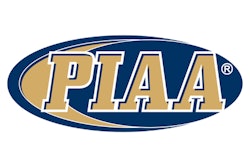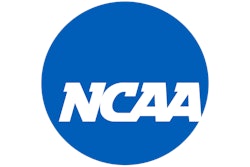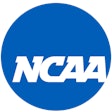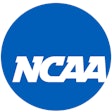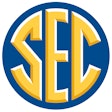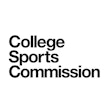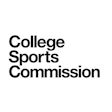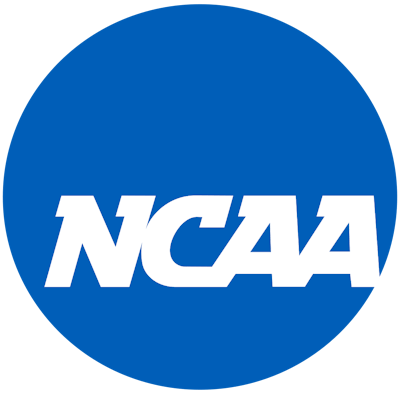
The Division I Board of Directors approved a proposal from the Division I Decision-Making Working Group that simplifies the governance structure for the division, increases student-athlete representation throughout all levels of decision-making, and provides greater authority to sport-specific committees over rules that impact their respective sports. The changes are expected to be phased in over the coming months, starting Sept. 1.
The new structure will comprise 30 Division I committees, including 19 committees that govern each Division I championship sport, a 32% reduction in the total number of Division I committees. Student-athletes will now have voting seats on almost every committee, which is an increase of 40 total seats, doubling the total number of student-athlete seats.
"Together, these changes embed student-athlete perspectives deeply into Division I governance and set a new standard for meaningful engagement," said Meredith Page, chair of the Division I Student-Athlete Advisory Committee and a former women's volleyball student-athlete at Radford. "Reform is not a single moment; it is a sustained commitment. As the national level decentralizes, it is essential that student-athletes expand their access, influence and representation at the conference and subdivisional levels."
The new committee structure decentralizes decision-making and extends the flexibility around certain rules — previously afforded to autonomy conferences — to other subdivisions. All subgroups within Division I will have the ability to act on rules about athletics personnel, scholarships, meals and nutrition, and preenrollment expenses (like assistance for families during official visits).
Division I will continue to have national standards for rules relating to ethical conduct and institutional control, recruiting regulations, minimum athletics eligibility rules, minimum academic requirements, season start and end dates, national championship administration, and minimum membership requirements.
The new structure does not impact how rules are changed for championships access or revenue distribution, including possible changes to the basketball performance funds. Changes to those rules require division-wide votes in which each school has one vote and no weighted voting would apply.
"College sports are entering a new era, with student-athletes at Division I schools receiving more financial, health and academic benefits than ever before," said Tim Sands, president at Virginia Tech and chair of the board. "It is time for the Association to adapt how decisions are made, with increased efficiency and increased student-athlete voice, and the board's vote to implement this new structure reflects the Association's commitment to a modernized approach to governing ourselves moving forward."
Under the new structure, the following committees will govern Division I:
- The Division I Board of Directors will remain the highest-ranking committee, with oversight of the budget, select litigation matters and the infractions processes.
- The Administrative Committee will replace the Division I Council as the committee with oversight in specified areas, including ethical conduct, academic and athletics eligibility, membership, and championships.
- The Academics and Eligibility Committee will report to the Administrative Committee and — via two subcommittees — will have oversight over minimum student-athlete standards for academic and athletics eligibility requirements.
- The Membership Committee will manage membership items, including reclassification processes and requirements for active Division I schools and conferences.
- The Student-Athlete Advisory Committee will continue to represent the voice of student-athletes. Each Division I conference will continue to have a student-athlete representative.
- Sport-specific oversight committees will report to the Administrative Committee and will have authority over rules for conduct of athletics personnel, playing and practice seasons, recruiting (with Administrative Committee review), and authority over Division I playing rules and championship administration. Each committee will include an opportunity for the respective coaches association representative to participate.
"Today's changes were carefully developed by student-athlete leaders and representatives from all subgroups to enable faster decisions and double student-athlete representation for DI, while ensuring access to championships and funding streams remain consistent for every school in the division," NCAA President Charlie Baker said. "From unprecedented financial benefits to health and academic guarantees, the NCAA is making changes to do more for student-athletes, and today's changes protect what brings DI together and updates the decision-making to meet this new era."
Within these committees, the autonomy conferences will have weighted voting, amounting to approximately 65% of each committee, except for the Student-Athlete Advisory Committee. If all members of a committee with weighted voting are in alignment on a given proposal, that proposal would pass. However, if one of the weighted vote members disagrees, the proposal would not be able to pass without support from another member of the committee. Weighted voting on sport committees and oversight committees will not apply to championship administration, including championship selections.
The board also adopted a resolution, which specifies that for a five-year period no changes can be made to membership requirements for existing Division I schools and conferences.
Following feedback from NCAA members, the final recommendation submitted by the Decision-Making Working Group and adopted by the board includes designated seats on each committee for faculty athletics representatives, reflecting the Association's continued commitment to academics as part of the college sports experience.
The new sport-specific oversight model also ensures that coaches are represented in decisions about their respective sports, including designated seats for a coaches association representative on each oversight committee.
Sport oversight committees already exist in football and men's and women's basketball, and other than the composition of the committees, they will not be impacted by the new structure changes.
At the recommendation of the working group, the board referred some membership questions to the new committee structure, including reviewing the NCAA infractions process and developing the process and meeting cadence for the new structure. The new committees will also be directed to consider specific definitions for autonomy conferences and review whether additional Division I rules should be decentralized, while considering possible changes for areas that will continue to have national standards.


















